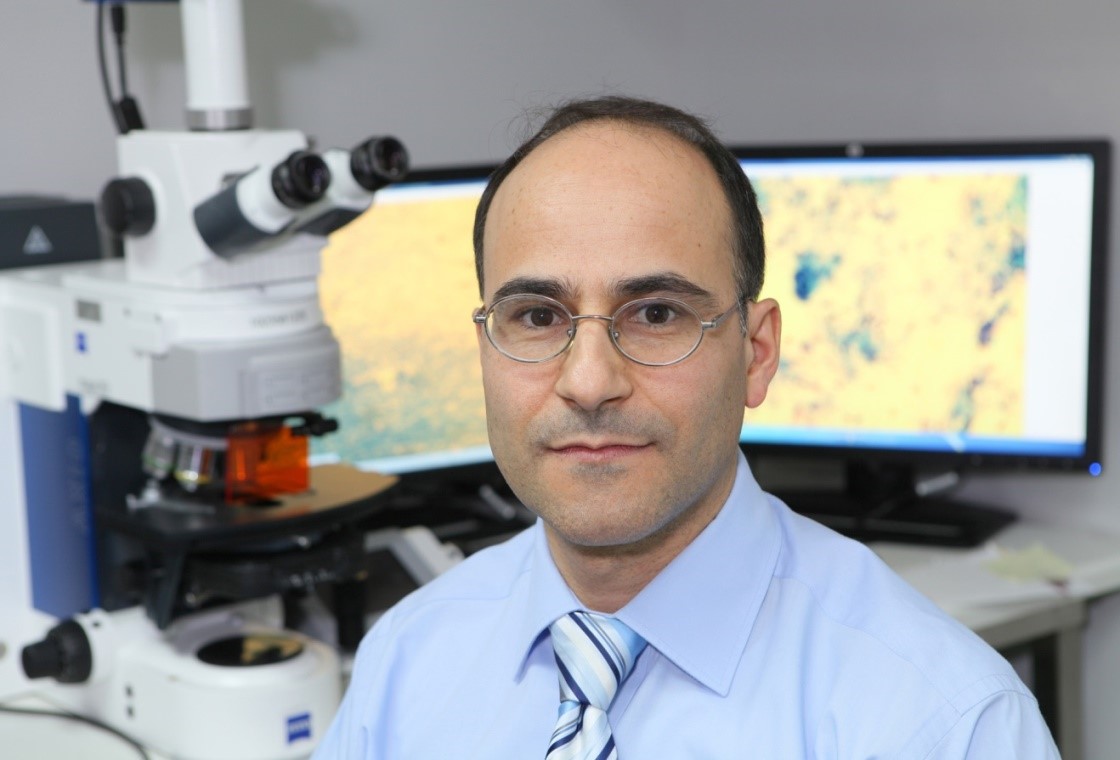
Kleopas Kleopa, professor and senior consulting neurologist at the Cyprus Institute of Neurology and Genetics, Cyprus School of Molecular Medicine, in Nicosia, Cyprus, was awarded an MDA research grant totaling $119,999 over a period of two years to test whether gene therapy treatment after disease onset could lead to functional improvements in CMT1X, the second most common form of Charcot-Marie-Tooth disease (CMT).
With previous MDA support, Kleopa and colleagues pioneered a gene therapy approach to treat the X-linked form of CMT, showing that a single spinal injection of the gene that is mutated in the disease was associated with production of normal protein in nerves and improvement of peripheral nerve health and motor performance in a mouse model of CMT.
Kleopa’s new work, co-funded together with the CMT Association, will further this approach as his team examines whether repeated injections in mice can lead to increased protein levels and tests whether treatment at later stages of the disease can lead to improvement similar to that seen for treatment in the early stages.
Please describe your current research in CMT.
Our goal is to advance and expand our gene therapy approach already developed in a previously funded MDA project to treat the X-linked form of CMT, one of the most common forms of inherited neuropathy.
Using mouse models of this disease, we have demonstrated that with a spinal injection of an inactivated virus carrying the normal gene that is mutated in patients, we can achieve expression of the normal protein in multiple nerves, leading to improvement of the peripheral nerve pathology and motor performance in this model. Now we will work to overcome further issues that are important to expand this approach.
Since we only used a single injection of the virus so far, we will examine whether repeated injections can lead to a higher expression of the normal gene. In addition, we will test whether treatment at later stages of disease could provide similar benefit as the early treatment we used so far, a very relevant question for treating patients at various stages of the disease. Overall, this project will advance the translational potential of gene therapy for this and other forms of inherited neuropathy.
What inspired you to study CMT?
I have been fascinated by the field of neuromuscular and neurogenetic diseases since my neurology residency, and therefore I went on to complete a neuromuscular fellowship. During this fellowship, I was fortunate to have as a mentor one of the leaders in the field of inherited neuropathies, Prof. Steve Scherer, at University of Pennsylvania. His mentorship has defined my entire career and inspired most of my research work.
What is your focus within the neuromuscular disease field, and why is it important?
My main focus is to clarify the mechanisms leading to the development of neuropathy and encephalopathy as a result of connexin mutations in CMT1X and in recent years the development of a gene therapy approach for this and other types of inherited neuropathy using viral vectors (gene delivery vehicles).
All of the inherited neuropathies remain incurable despite the progress made in the last couple of decades in understanding the causes and mechanism of disease. Efforts to develop treatments for some of the best characterized forms should now be a priority and will lead the way to finding cures in the near future for other forms as well.
What is the expected outcome of this research?
This work has therapeutic implications, first for this particular type of inherited neuropathy, as it provides a proof of principle for an effective gene replacement therapy using a delivery method that can be easily applied to patients. But it also has wider implications, since other forms of inherited neuropathy can be similarly treated with modified vectors (delivery vehicles) carrying the missing genes, or even trophic (providing nourishment and/or support) and other factors that could benefit patients.
How will your research lead to treatments and cures?
We hope that this study will facilitate further investigation into the potential of gene therapy for inherited neuropathies and other neuromuscular diseases.
Does your work have any potential implications for other disease fields?
The methodology of widespread gene delivery to the peripheral nervous system may prove useful not only for many of the inherited neuropathies but also for some more common neuromuscular disorders such as motor neuron disease and inflammatory neuropathies.
To learn more about how MDA research is accelerating treatments and cures for CMT, please visit mda.org.
